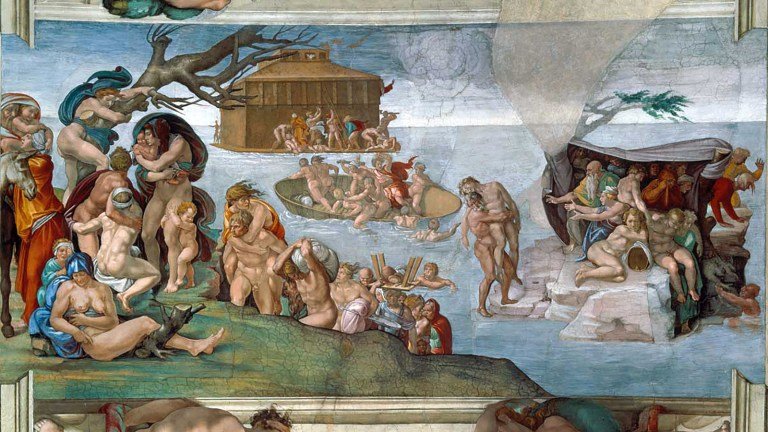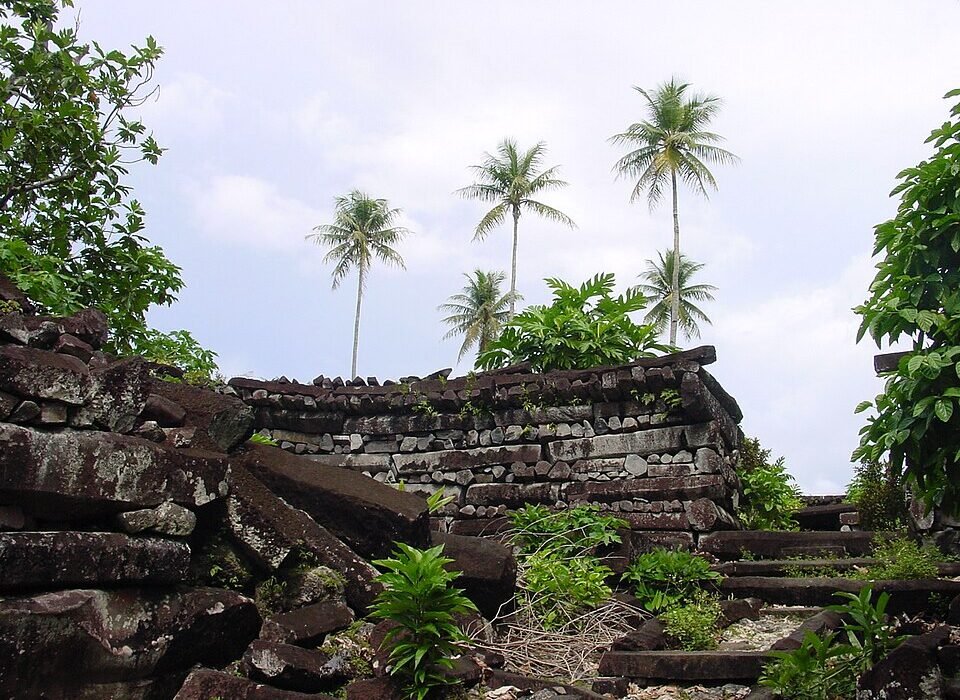Beneath the gentle lapping of ocean tides and the rhythmic pounding of the surf lies a hidden world—a realm of secrets swallowed by the sea, lost to memory and myth. For centuries, mariners have spun tales of sunken kingdoms and submerged cities, civilizations that once thrived and then vanished beneath the waves in cataclysmic upheaval. While such stories have often been dismissed as folklore or fantasy, recent discoveries and new scientific insights suggest that the truth may be stranger than legend.
This is the story of Earth’s forgotten societies—the ancient civilizations lost beneath the sea. From the mysterious ruins off the coast of India to the mythical cities of Plato’s imagination, we dive into the deep, guided by archaeology, geology, mythology, and technology. What we find is a haunting reminder that our planet is not static. Seas rise, lands sink, and human history, like the tide, ebbs and flows in cycles of creation and destruction.
The Great Deluge: Flood Myths as Historical Clues
The myth of a great flood pervades human storytelling, found in cultures as diverse and distant as Mesopotamia, India, China, North America, and Polynesia. The Epic of Gilgamesh, the Bible’s story of Noah, the Hindu tale of Manu, and the ancient Greek myth of Deucalion all describe civilizations wiped out by overwhelming floods. Scholars once viewed these stories as metaphorical, spiritual narratives about renewal and divine judgment. But what if they are echoes of real events?
At the end of the last Ice Age, roughly 12,000 years ago, Earth underwent a dramatic transformation. Melting glaciers caused sea levels to rise over 400 feet, submerging vast coastal areas that had been home to human populations for millennia. Entire landscapes—plains, river valleys, and coastal cities—vanished beneath encroaching seas. While the process was gradual on a geological timescale, for the people living through it, it would have seemed apocalyptic.
This epoch of rising seas is now believed by many researchers to have inspired the flood myths passed down through generations. These stories may be not just morality tales, but ancestral memories of true cataclysms—mass drownings, displacements, and the obliteration of thriving communities. In this light, the legends become maps, guiding archaeologists to seek traces of lost worlds beneath the waves.
Dwarka: The Sunken City of Krishna
Off the western coast of India, near the modern town of Dwarka in Gujarat, lie the submerged remains of what may be one of the oldest cities ever discovered. According to Hindu mythology, this was once the magnificent capital of Lord Krishna, a city built with golden palaces and silver roads, protected by massive gates and populated by 900,000 royal residents. Ancient scriptures describe Dwarka as a spiritual center, but also a technological marvel, replete with architecture and infrastructure far ahead of its time.
For centuries, Dwarka was considered purely mythical. That changed in the early 2000s, when underwater explorations by India’s National Institute of Ocean Technology revealed a vast complex of structures lying 130 feet below the Gulf of Khambhat. Sonar imaging showed straight roads, geometric building patterns, and massive stone foundations—signs of an organized urban settlement.
Carbon dating of artifacts from the site, including pottery and tools, yielded astonishing results—some materials dated as far back as 7500 BCE. That’s over 9,000 years ago, older than the pyramids of Egypt or the Sumerian cities of Mesopotamia.
While debate continues over the interpretation of these findings, the evidence is compelling. If confirmed, the ruins off Dwarka could represent a lost civilization from a time before recorded history—a city whose drowning may have inspired the legends of Krishna and the Mahabharata. More importantly, it would force a radical revision of the timeline of human civilization.
Yonaguni Monument: Architecture or Natural Wonder?
In the warm waters of Japan’s Ryukyu Islands, divers stumbled upon a massive underwater structure near Yonaguni in the 1980s. The formation resembled a stepped pyramid with flat terraces, straight edges, and sharply angled corners—far too geometric, many argued, to be the product of natural erosion. It was dubbed the Yonaguni Monument and quickly ignited a firestorm of speculation.
Measuring over 165 feet in length and rising 90 feet from the seabed, the Yonaguni Monument is a breathtaking sight. Some researchers, such as marine geologist Dr. Masaaki Kimura, argue that the structure is man-made, possibly the remnant of an ancient city that predates written history. He has identified what he believes to be roads, canals, stairways, and even inscriptions carved into the stone. Kimura places the date of Yonaguni’s construction at over 10,000 years ago, during the last Ice Age.
Skeptics contend that the monument is a natural formation, sculpted by tectonic activity and wave erosion. However, the surrounding area contains several other formations that also appear geometric, raising the possibility of a larger archaeological site beneath the sea. If the Yonaguni Monument is artificial, it would upend our understanding of early architecture and point to an unknown civilization lost to time.
Whether natural or man-made, the monument continues to attract explorers and scholars alike. It’s a symbol of how the sea guards its secrets—and how those secrets may one day transform our understanding of prehistory.
Atlantis: From Legend to Likely Candidates
No discussion of sunken civilizations is complete without Atlantis—the mother of all lost cities. First described by Plato in 360 BCE, Atlantis was a mighty island nation located beyond the “Pillars of Hercules” (believed to be the Strait of Gibraltar). According to Plato, Atlantis was a technologically advanced society that succumbed to moral decay and was destroyed in a single day and night of earthquakes and floods, vanishing into the sea.
For over two millennia, Atlantis has been a tantalizing mystery, inspiring countless books, expeditions, and wild theories. While most historians regard it as allegorical, some researchers have pursued possible real-world counterparts. The Minoan civilization on the island of Santorini (ancient Thera) is one of the most credible candidates.
Around 1600 BCE, the island of Thera experienced one of the most powerful volcanic eruptions in history. The explosion devastated the Minoan settlements, triggered massive tsunamis, and may have contributed to the civilization’s decline. The sophisticated Minoan culture, known for its art, architecture, and maritime prowess, fits Plato’s description in many respects. Could the legend of Atlantis be a distorted memory of Thera’s destruction?
Other locations, such as the submerged ruins off the coast of Spain’s Donana National Park, have been proposed as the real Atlantis. Satellite imaging, ground-penetrating radar, and archaeological digs have revealed large circular formations and ancient structures beneath the marshlands. These may align with Plato’s descriptions of Atlantis as a concentric ringed city.
Though the jury is still out, the search for Atlantis has turned from fantasy to legitimate inquiry. And in the process, it’s sparked a deeper examination of how many advanced civilizations may have met their end not in battle—but beneath the rising tide.
The Submerged Temples of Mahabalipuram
On the southeastern coast of India lies Mahabalipuram, a site known for its stunning rock-cut temples and ancient architecture. For centuries, local legend spoke of “Seven Pagodas,” magnificent temples built along the coast—only one of which remained above water. The others, it was said, had been swallowed by the sea.
These tales were dismissed as folklore until 2004, when the Indian Ocean tsunami pushed the shoreline back and temporarily revealed long-buried stone structures beneath the waves. Marine archaeologists later confirmed the presence of submerged ruins off the coast, including walls, steps, and sculptures remarkably similar in style to the temples on land.
The discovery reignited interest in the lost temples and sparked new exploration. Some researchers believe Mahabalipuram was once a much larger religious and cultural center, with part of its glory now lying underwater. The legend of the Seven Pagodas, it turns out, may have been a cryptic record of a real catastrophe.
The Bimini Road and the Caribbean Enigma
In 1968, divers in the Bahamas discovered a series of massive rectangular limestone blocks arranged in a straight line on the ocean floor near Bimini Island. Dubbed the “Bimini Road,” the structure sparked immediate speculation that it was a man-made causeway—possibly evidence of Atlantis or another lost culture.
The stones appeared to be precisely cut and placed, stretching over a quarter-mile. Some believed they were the remnants of ancient harbors, roads, or sea walls. Others argued that the formations were natural beachrock shaped by geological processes.
Further underwater exploration revealed similar formations in the region, suggesting that if the Bimini Road is artificial, it may be part of a much larger complex. But as with Yonaguni, the debate remains unresolved. The Caribbean is littered with submerged features, and until comprehensive excavations are conducted, their origin will remain shrouded in mystery.
The Black Sea Flood Hypothesis
In 1997, oceanographers William Ryan and Walter Pitman published a groundbreaking theory: that the Black Sea was once a freshwater lake until a cataclysmic flood transformed it into a saltwater sea around 5600 BCE. According to their research, the melting of Ice Age glaciers caused the Mediterranean to rise, eventually spilling over into the Black Sea basin through the Bosporus Strait in a deluge that may have inspired Noah’s flood and other myths.
The flood would have inundated thousands of square miles of fertile farmland in a matter of weeks, displacing entire populations. Underwater expeditions in the Black Sea have uncovered evidence of ancient shorelines, submerged dwellings, and human artifacts, lending credibility to the theory.
This event may represent one of the most significant prehistoric floods on record, possibly linked to the collapse of early Neolithic societies in the region. If true, it suggests that the rise and fall of sea levels not only shaped the planet’s geography—but its mythology and memory as well.
The Forgotten Cities of Doggerland
Between Britain and mainland Europe lies the North Sea. But 12,000 years ago, it was dry land—a rich expanse of forests, rivers, and hills known as Doggerland. This now-submerged land bridge once connected the British Isles to the rest of Europe and was home to Mesolithic hunter-gatherers.
As the Ice Age ended and glaciers melted, Doggerland slowly disappeared beneath the sea. Archaeological finds from fishing trawlers have included bones, tools, and even remnants of dwellings. Recent sonar mapping has revealed ancient riverbeds and possible settlements beneath the seabed.
Doggerland is a poignant example of how entire societies—entire landscapes—can vanish without a trace. As researchers continue to probe the North Sea floor, they hope to uncover a more complete picture of the people who once lived there, and how they coped with the inexorable rise of the ocean.
Conclusion: The Sea Remembers
The ocean covers over 70% of our planet’s surface. For every ancient city we’ve uncovered on land, there may be another waiting silently beneath the waves. The sea, it turns out, is not just a barrier but a library of forgotten history, holding the memories of civilizations we’ve yet to name.
The search for ancient civilizations lost beneath the sea is not just an archaeological pursuit—it’s a journey into our collective past. It challenges what we think we know about human history, about the rise of cities, the development of technology, and the resilience of cultures in the face of planetary change.
As sonar, satellite imaging, and deep-sea robotics improve, we are on the verge of a new age of discovery. The sea may have claimed these civilizations, but it has not erased them. They wait, patient and buried, for us to remember.
And in remembering them, we remember something essential about ourselves—that we, too, are part of a vast and fragile story, written on the land and whispered beneath the sea.






